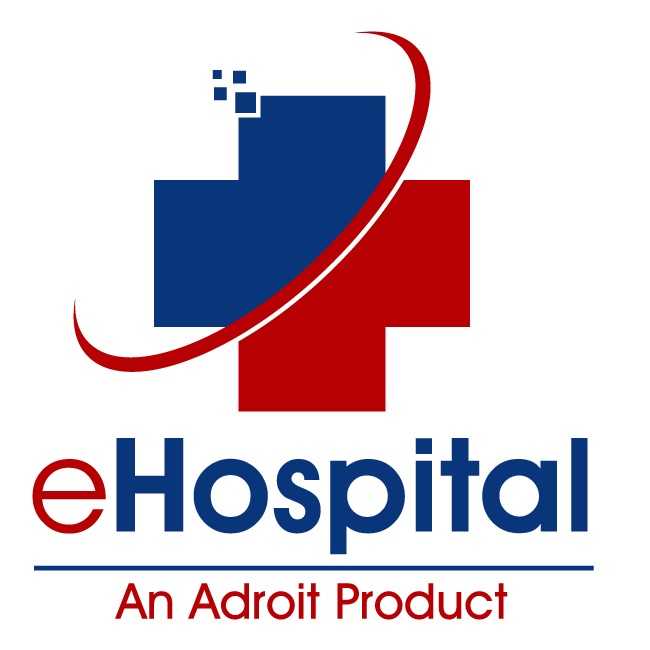Description

eHospital

FP-LIMS
Comprehensive Overview: eHospital vs FP-LIMS
eHospital and FP-LIMS are software solutions designed for healthcare management and laboratory information management, respectively. Here's an overview of both products:
eHospital
a) Primary Functions and Target Markets
-
Primary Functions: eHospital is a comprehensive Hospital Management System (HMS) designed to streamline hospital operations and improve patient care. Key functions include patient registration, appointment scheduling, billing, electronic medical records (EMR), inventory management, staff scheduling, and reporting. It often features modules for various departments such as pharmacy, radiology, laboratory, and outpatient services.
-
Target Markets: eHospital targets hospitals, clinics, and other healthcare facilities of varying sizes, from small clinics to large multi-specialty hospitals, primarily focusing on enhancing operational efficiency and patient experience.
b) Market Share and User Base
- Market Share and User Base: As of the last update, eHospital is one of many HMS solutions available in a competitive market. It serves a diverse range of healthcare providers globally but precise market share and user base figures are variable, depending on regional adoption and competition. Its user base includes healthcare facilities looking for integrated systems to improve service delivery.
c) Key Differentiating Factors
- Integration Capabilities: eHospital is known for its extensive integration with other healthcare systems and third-party applications, facilitating seamless data flow across different departments.
- Scalability: Offers scalable solutions suitable for various sizes of healthcare institutions, which can expand as the needs of the hospital grow.
FP-LIMS
a) Primary Functions and Target Markets
-
Primary Functions: FP-LIMS (Laboratory Information Management System) is designed to manage laboratory operations more efficiently. It offers functionalities such as sample management, data analysis, quality control, compliance management, and reporting. It integrates with instruments and other enterprise systems to streamline lab workflows and ensure regulatory compliance.
-
Target Markets: FP-LIMS is targeted towards laboratories in various industries, including healthcare, pharmaceuticals, environmental monitoring, food and beverage, and manufacturing, addressing the need for efficient data management and reporting.
b) Market Share and User Base
- Market Share and User Base: FP-LIMS holds a specific niche in the LIMS market. While not the largest provider, it has carved out a substantial user base among labs that require robust compliance and flexible integration options. Exact market share figures may vary with technology adoption trends and industry-specific needs.
c) Key Differentiating Factors
- Customization and Flexibility: FP-LIMS is known for its high level of customization, allowing it to adapt to varied laboratory processes and requirements across different sectors.
- Compliance and Quality Management: It excels in meeting regulatory standards and ensuring data accuracy and traceability, which is critical for labs in regulated industries.
Comparative Summary
eHospital and FP-LIMS cater to different markets, with eHospital focusing on hospital management and FP-LIMS on laboratory information management. eHospital's strength lies in its comprehensive hospital management capabilities and integration across healthcare departments, while FP-LIMS emphasizes flexibility, customization, and compliance in the laboratory setting.
In terms of market share, both serve important but different niches; hospital management systems like eHospital often have broader deployment owing to the necessity of centralized patient and operational management in healthcare, while FP-LIMS serves specialized laboratory environments where data integrity and compliance are critical. The choice between these systems typically depends on the specific operational needs of the provider or laboratory.
Contact Info

Year founded :
Not Available
Not Available
Not Available
India
http://www.linkedin.com/company/ehospital

Year founded :
Not Available
Not Available
Not Available
Not Available
Not Available
Feature Similarity Breakdown: eHospital, FP-LIMS
eHospital and FP-LIMS are both software solutions tailored to specific needs within the healthcare and laboratory sectors, respectively. Here's a breakdown of their feature similarities and differences:
a) Core Features in Common
-
Data Management:
- Both systems offer robust data management capabilities, crucial for handling patient or lab data efficiently. This includes data entry, storage, retrieval, and integration with other systems.
-
Reporting and Analytics:
- They provide reporting and analytics tools that help in generating insights from the collected data. This can include generating detailed reports for decision-making processes, compliance, and performance analysis.
-
User Access Control:
- Both platforms feature strong user access controls to ensure that only authorized personnel can access sensitive data, preserving privacy and security which is critical in healthcare and laboratory environments.
-
Integration with Other Systems:
- Integration capabilities are a core feature, allowing these systems to connect with various existing technologies, such as ERP systems, medical devices, and laboratory instruments.
b) User Interface Comparison
-
eHospital:
- Designed with healthcare professionals in mind, eHospital's UI is typically focused on ease of use for medical staff. This often means simple navigation, quick access to patient records, and functionality that facilitates day-to-day operations like scheduling and billing.
- The interface might include dashboards for monitoring key metrics related to hospital operations and patient care.
-
FP-LIMS:
- The FP-LIMS interface is optimized for laboratory environments, emphasizing workflow efficiency and precision. Its UI is usually more technical, with specialized modules for different lab processes, including sample tracking, test management, and quality control.
- Users might interact with complex data visualizations and customizable reporting tools tailored for laboratory analysis.
c) Unique Features
-
eHospital:
- Patient Management System: Comprehensive features for managing all aspects of patient care, from admission to discharge, along with medical histories and treatment plans.
- Clinical Workflow Management: Tools to streamline clinical processes, ranging from diagnostic procedures to treatment protocols, improving overall hospital efficiency.
- EMR/EHR Integration: Advanced electronic medical records management systems, often with patient portals to enhance patient engagement.
-
FP-LIMS:
- Laboratory Information Management: Detailed functions for managing lab data workflows, including sample lifecycle management and high-performance data processing.
- Quality Control Modules: Dedicated features for real-time quality assurance and compliance with industry standards like ISO.
- Instrument Integration: Extensive integration capabilities with lab instruments for automated data collection and real-time analysis.
In summary, while both eHospital and FP-LIMS share some core functionalities, their designs and feature sets are distinctively tailored to their respective fields. eHospital is focused on patient management and clinical operations, whereas FP-LIMS is specialized in laboratory information management and sample workflow automation.
Features

Not Available

Not Available
Best Fit Use Cases: eHospital, FP-LIMS
eHospital and FP-LIMS are software solutions tailored to specific industries and use cases. Understanding their optimal application scenarios can help organizations choose the right tool for their needs.
eHospital
a) Best Fit Use Cases for eHospital:
- Types of Businesses or Projects: eHospital is designed for healthcare facilities, such as hospitals, clinics, and nursing homes, that require comprehensive hospital management systems. It caters to both small clinics and large multi-specialty hospitals.
- Healthcare Management: It excels in streamlining operations such as patient registration, appointment scheduling, billing, electronic medical records management (EMR), and resource allocation.
- Hospital Administration: The software is ideal for hospital administrators looking to improve operational efficiency, enhance patient care, and automate repetitive tasks.
- Multispecialty Facilities: eHospital is particularly beneficial for multispecialty healthcare providers due to its ability to handle various departments and services under one unified platform.
d) Industry Verticals or Company Sizes:
- Industry Vertical: Specifically focuses on the healthcare industry, including public and private hospitals, speciality care centers, and smaller clinics.
- Company Size: Suitable for a wide range of healthcare providers, from single-doctor practices to large hospital networks, due to its modular and scalable design.
FP-LIMS
b) Preferred Scenarios for FP-LIMS:
- Laboratory Settings: FP-LIMS is ideal for laboratories needing robust laboratory information management systems to manage sample tracking, testing workflows, results management, and compliance with industry standards.
- Industries with High Compliance Needs: Well-suited for industries such as pharmaceuticals, biotechnology, food and beverage, environmental testing, and manufacturing that require stringent data management and reporting.
- R&D Facilities: Research and development labs can benefit from FP-LIMS's capability to handle complex data analysis and integration with various lab instruments.
d) Industry Verticals or Company Sizes:
- Industry Vertical: While applicable across multiple sectors, FP-LIMS is highly focused on scientific and industrial laboratories, including chemical, environmental, pharmaceutical, and food industries.
- Company Size: Scalable to fit the needs of small laboratory setups to large industrial labs, offering both standard and customizable modules to accommodate various complexity levels and specific requirements.
Both eHospital and FP-LIMS serve distinct purposes and cater to different industry needs. eHospital shines in healthcare settings where patient management and administrative efficiency are critical, while FP-LIMS is a strong choice for scientific and industrial laboratories that require meticulous data handling and regulatory compliance.
Pricing

Pricing Not Available

Pricing Not Available
Metrics History
Metrics History
Comparing teamSize across companies
Conclusion & Final Verdict: eHospital vs FP-LIMS
To determine which product, eHospital or FP-LIMS, offers the best overall value, it is crucial to evaluate each based on their intended use cases, features, cost, user experience, scalability, and support.
a) Best Overall Value
Considering all factors, the best overall value depends on the specific needs of the user or organization. If the primary requirement is healthcare management across various hospital departments, then eHospital would likely offer the best overall value. Conversely, if the primary need is laboratory information management, particularly in settings like clinical laboratories, research facilities, or companies where tracking and managing large volumes of laboratory data is crucial, then FP-LIMS would be more valuable.
b) Pros and Cons
eHospital:
Pros:
- Comprehensive system designed specifically for healthcare facilities.
- Integrates various departments within a hospital for streamlined operations.
- Offers features like patient management, billing, appointment scheduling, and electronic medical records.
- Can improve operational efficiency and patient care.
Cons:
- May require significant initial investment and ongoing maintenance.
- Implementation and training might be time-consuming for hospital staff.
- May be too complex for smaller clinics that do not require comprehensive management.
FP-LIMS:
Pros:
- Specifically tailored for laboratory use, offering robust features for data tracking, quality control, and reporting.
- Can handle large volumes of data with precision, essential for research and industrial labs.
- Offers automation of routine tasks to improve efficiency and reduce errors.
Cons:
- Not designed for comprehensive healthcare management, limiting its use to laboratory environments.
- Might necessitate integration with other systems for facilities requiring broader management capabilities.
- Specialized training might be required to handle complex features.
c) Recommendations for Users
-
Identify Core Needs: Users should start by clearly identifying their core requirements. If operational management across different hospital departments is essential, eHospital is likely a better fit. If focusing on specialized lab operations, FP-LIMS would be more suitable.
-
Evaluate Scalability and Compatibility: Consider future growth and whether the product can scale with your needs. Also, assess compatibility with existing systems to ensure smooth integrations.
-
Cost-Benefit Analysis: Analyze the total cost of ownership, including initial setup, customization, training, and ongoing maintenance. Balance these against the benefits each system will bring to the organization.
-
User Training and Support: Check the availability and quality of training and support services to ensure smooth implementation and ongoing operation. Choose the product where the vendor offers reliable support aligned with user needs.
-
Trial and Feedback: Whenever possible, trial each product and gather feedback from future users within the organization. This can provide insights beyond initial comparisons and highlight specific usability issues.
In conclusion, the decision between eHospital and FP-LIMS should be guided by the specific operational requirements and priorities of the user or organization. Both products provide distinct advantages within their respective domains, making them valuable in different contexts.
Add to compare
Add similar companies



